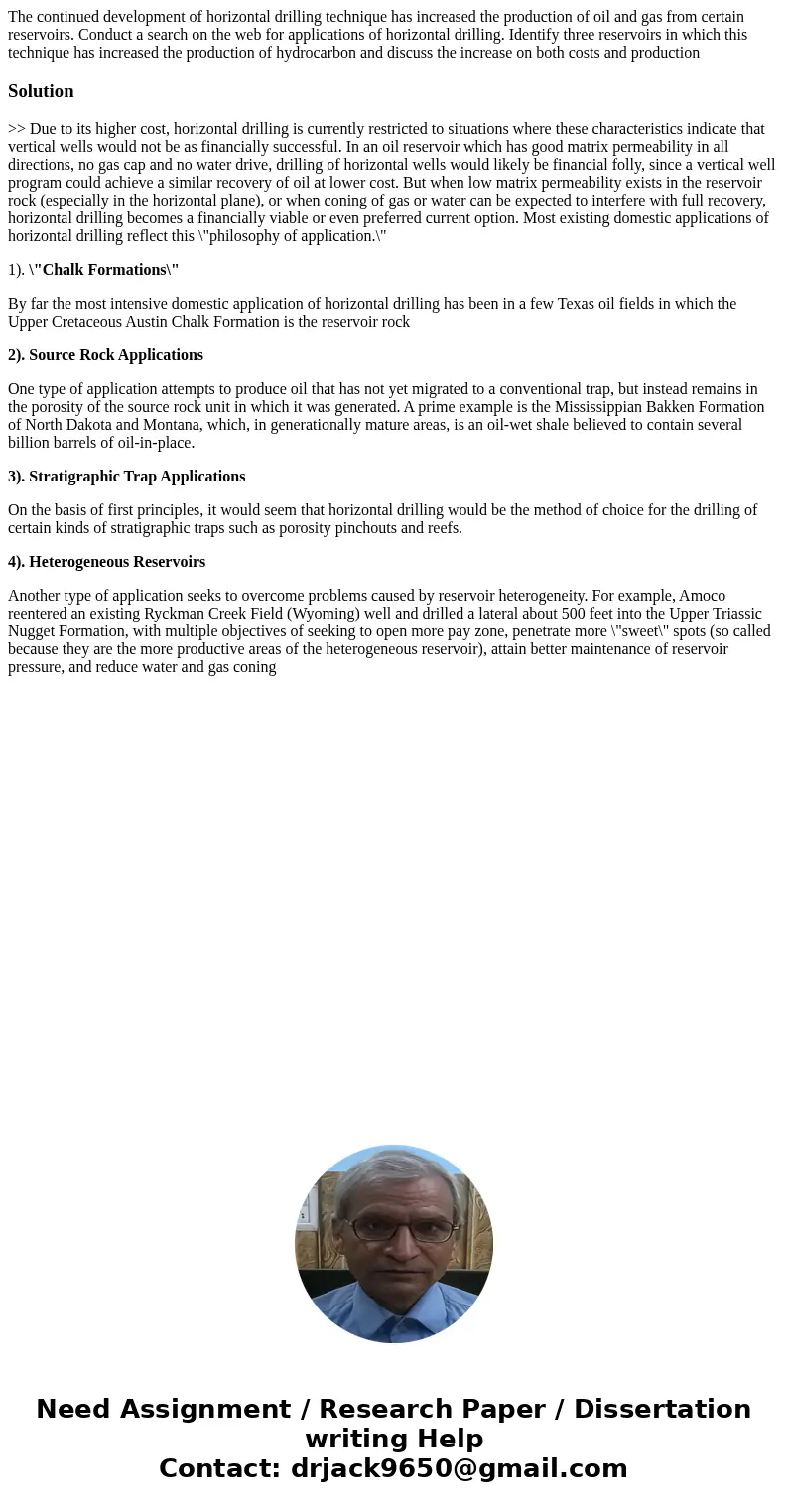The continued development of horizontal drilling technique h
The continued development of horizontal drilling technique has increased the production of oil and gas from certain reservoirs. Conduct a search on the web for applications of horizontal drilling. Identify three reservoirs in which this technique has increased the production of hydrocarbon and discuss the increase on both costs and production
Solution
>> Due to its higher cost, horizontal drilling is currently restricted to situations where these characteristics indicate that vertical wells would not be as financially successful. In an oil reservoir which has good matrix permeability in all directions, no gas cap and no water drive, drilling of horizontal wells would likely be financial folly, since a vertical well program could achieve a similar recovery of oil at lower cost. But when low matrix permeability exists in the reservoir rock (especially in the horizontal plane), or when coning of gas or water can be expected to interfere with full recovery, horizontal drilling becomes a financially viable or even preferred current option. Most existing domestic applications of horizontal drilling reflect this \"philosophy of application.\"
1). \"Chalk Formations\"
By far the most intensive domestic application of horizontal drilling has been in a few Texas oil fields in which the Upper Cretaceous Austin Chalk Formation is the reservoir rock
2). Source Rock Applications
One type of application attempts to produce oil that has not yet migrated to a conventional trap, but instead remains in the porosity of the source rock unit in which it was generated. A prime example is the Mississippian Bakken Formation of North Dakota and Montana, which, in generationally mature areas, is an oil-wet shale believed to contain several billion barrels of oil-in-place.
3). Stratigraphic Trap Applications
On the basis of first principles, it would seem that horizontal drilling would be the method of choice for the drilling of certain kinds of stratigraphic traps such as porosity pinchouts and reefs.
4). Heterogeneous Reservoirs
Another type of application seeks to overcome problems caused by reservoir heterogeneity. For example, Amoco reentered an existing Ryckman Creek Field (Wyoming) well and drilled a lateral about 500 feet into the Upper Triassic Nugget Formation, with multiple objectives of seeking to open more pay zone, penetrate more \"sweet\" spots (so called because they are the more productive areas of the heterogeneous reservoir), attain better maintenance of reservoir pressure, and reduce water and gas coning

 Homework Sourse
Homework Sourse